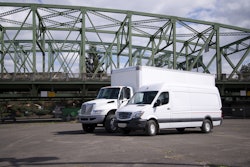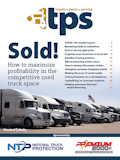
Tariff state of play
- Brazil and India have the highest tariff rates at about 50%. China's triple-digit tariffs have been paused, again, as negotiations between the U.S. and China continue.
- Commercial vehicles and their parts are somewhat protected, particularly as it relates to Mexico and Canada. Tariffs on those countries are in effect but do not apply to goods covered by the U.S.-Mexico-Canada Agreement.
- Medium- and heavy-duty trucks and parts imports are being investigated as a matter of national security. Such investigations took place before tariffs were levied on other goods, such as automobiles, steel and copper.
- Tariffs are expected to, eventually, drag on the U.S. economy, bringing down U.S. GDP growth and driving up unemployment.
A new spate of tariffs came out of Washington, D.C., last week, including higher levies on India and Brazil, and a pause, at least for now, on higher tariff rates on China. The results of these tariffs remain to be seen on a global, interconnected supply chain, both inside of trucking and out.
“Suppliers are essential to keeping more than 14 million trucks on the road, building, maintaining and repairing the vehicles that move critical goods and services,” says Shannon O’Brien, aftermarket commercial vehicle lead, MEMA Aftermarket Suppliers. “The commercial vehicle aftermarket depends on a complex global supply chain that takes time to adjust to tariff changes. While suppliers are working to respond to recent announcements, many small- and mid-sized companies are already feeling the strain and lack the resources to absorb sudden cost increases.”
Here's where we stand now.
Which countries are affected?
Brazil and India, as of press time, face some of the highest tariffs at 50% each. China, which earlier this year faced triple-digit tariffs, is holding steady at 30%, for now. Negotiators are working on a permanent agreement between the U.S. and China, with Trump signing another 90-day pause on additional Chinese tariffs on Monday.
[RELATED: ACT offers warning for freight market in months ahead]
Mexico is facing a 25% tariff with a possible increase to 35%, which is where Canada sits. However, goods covered by the U.S.-Mexico-Canada Agreement, negotiated during the first Trump term, are exempt. For now, this covers many commercial vehicles and parts.
Other tariff rates include Australia at 10%, Germany at 10%, Thailand at 19%, South Africa at 30% and Japan at 15%. There are exceptions, such as some energy products from Australia and the USMCA-covered goods.
Will commercial vehicles stay exempt?
That’s still up in the air. The Bureau of Industry and Security, part of the U.S. Department of Commerce, initiated an investigation in April to determine if imports of medium- and heavy-duty trucks and truck parts are a threat to national security.
“A strong and resilient automotive and truck industry is vital to our national security,” says Under Secretary of Commerce for Industry and Security Jeffrey Kessler. “Under President Trump’s leadership, the Commerce Department will work to support this vital sector and carefully assess the risks posed by external threats and supply chain vulnerabilities.”
[RELATED: What would tossing GHG regulations do to truck sales?]
Section 232 investigations — which is the part of the federal code that allows for these inquiries — often preceded tariff rulings from the Trump administration. A copper investigation was ordered in March; the White House issued a universal 50% tariff was issued Aug. 1.
“Additional measures, such as potential Section 232 tariffs on commercial vehicles and parts, could further threaten an industry already facing a prolonged freight recession,” O’Brien says. “Rising costs may cause fleets to buy fewer trucks, delay safety technology investments, and postpone maintenance or parts replacement.”
Are any other goods exposed to a universal tariff?
Yes. And it could affect the transportation industry.
As of Aug. 11, there’s a 50% tariff on all steel and aluminum imports and steel derivative products, excepting those from the United Kingdom. Steel and aluminum are critical materials for the trucking industry, especially trailers. This could put upward pressure on trucks and parts.
The Budget Lab at Yale shows a 10.8% increase in transportation equipment in the short-term and a 6.4% increase in the long run. Certain are set to go up 41% and 17.3%. Amid those increases, transportation costs are expected to hold steady in the short-term and rise a mere 0.7% over the long run.
What does this mean for the U.S. economy?
It’s really tough to say. Consumers haven’t faced tariffs this high since the 1930s, and it’s still not an apples-to-apples comparison. The Budget Lab says it expects prices to rise 1.8% because of tariffs, or about $2,400 per American household. This assumes the Federal Reserve holds the line on interest rates.
Yale’s analysis also says tariffs will weigh on U.S. GDP growth, nudging it 0.5% lower in 2025 and 2026. Longer term, it predicts a 0.4% smaller U.S. economy, the equivalent of $125 billion. There’s bad news for the labor market too. The Budget Lab shows 0.3% higher employment rising to a 0.7% increase by 2026. By the end of this year, it says 505,000 jobs will be struck from payrolls nationwide.
The consumer price index jumped 2.7% in July, which is an increase, but still slightly less than many analysts expected.
Is it all depressing news?
Depends on who you talk to.
In the long run, Yale does see an expansion of U.S. manufacturing by 2.1%. But there will be an offset, with construction output contracts declining 3.6% and agriculture dropping 0.8%. The government is also collecting a lot of money from these tariffs. The Budget Lab predicts collections of $2.7 trillion from 2026-2035. However, $475 billion in negative dynamic revenues bring the total down to $2.2 trillion.
Treasury data shows that, in June, customs duties jumped 301% year over year to $27 billion in collections. It seems like a huge amount of money — and it is — but it pales in comparison to where most of the federal tax receipts come from. For instance, the largest share of federal taxes come in the form of individual income taxes, FICA and Social Security taxes. That collection for June was $424 billion.









